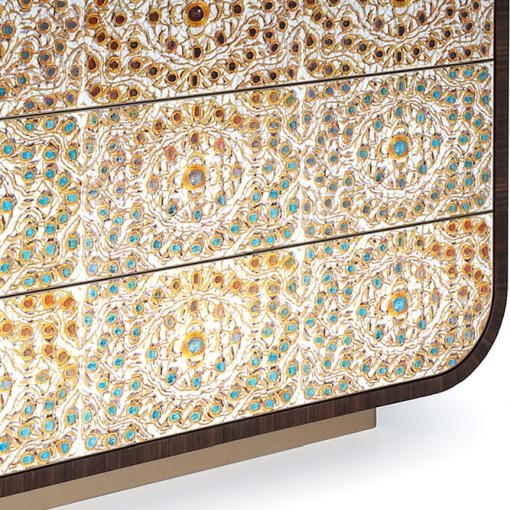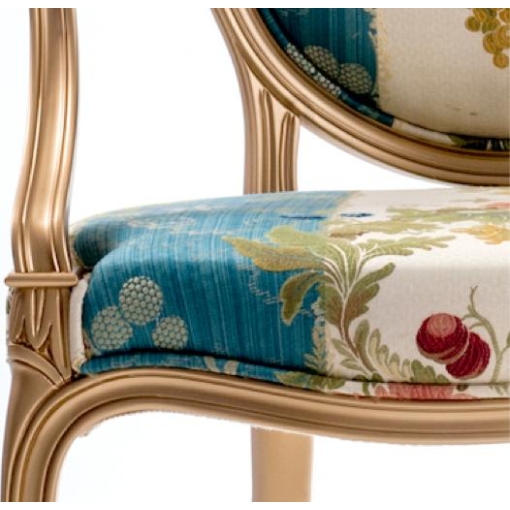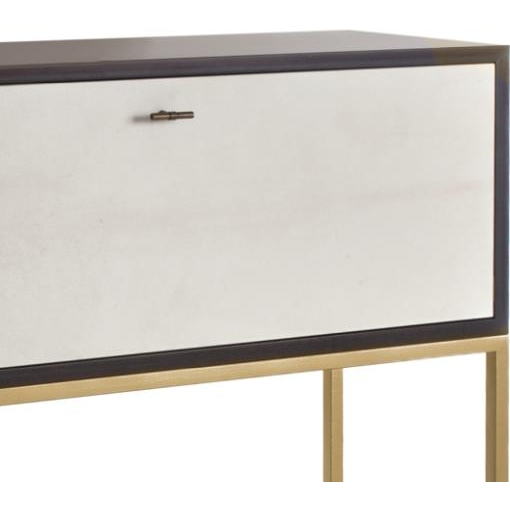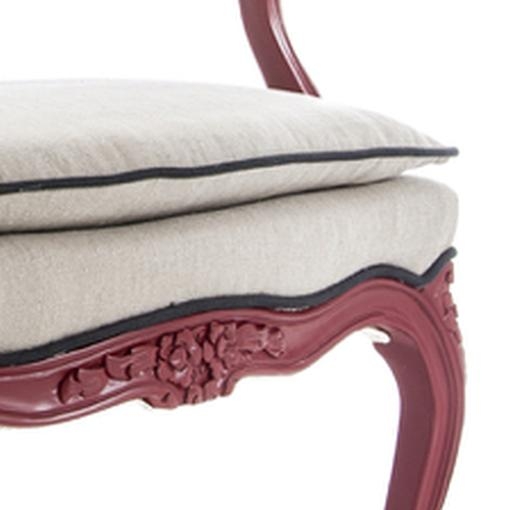About Us
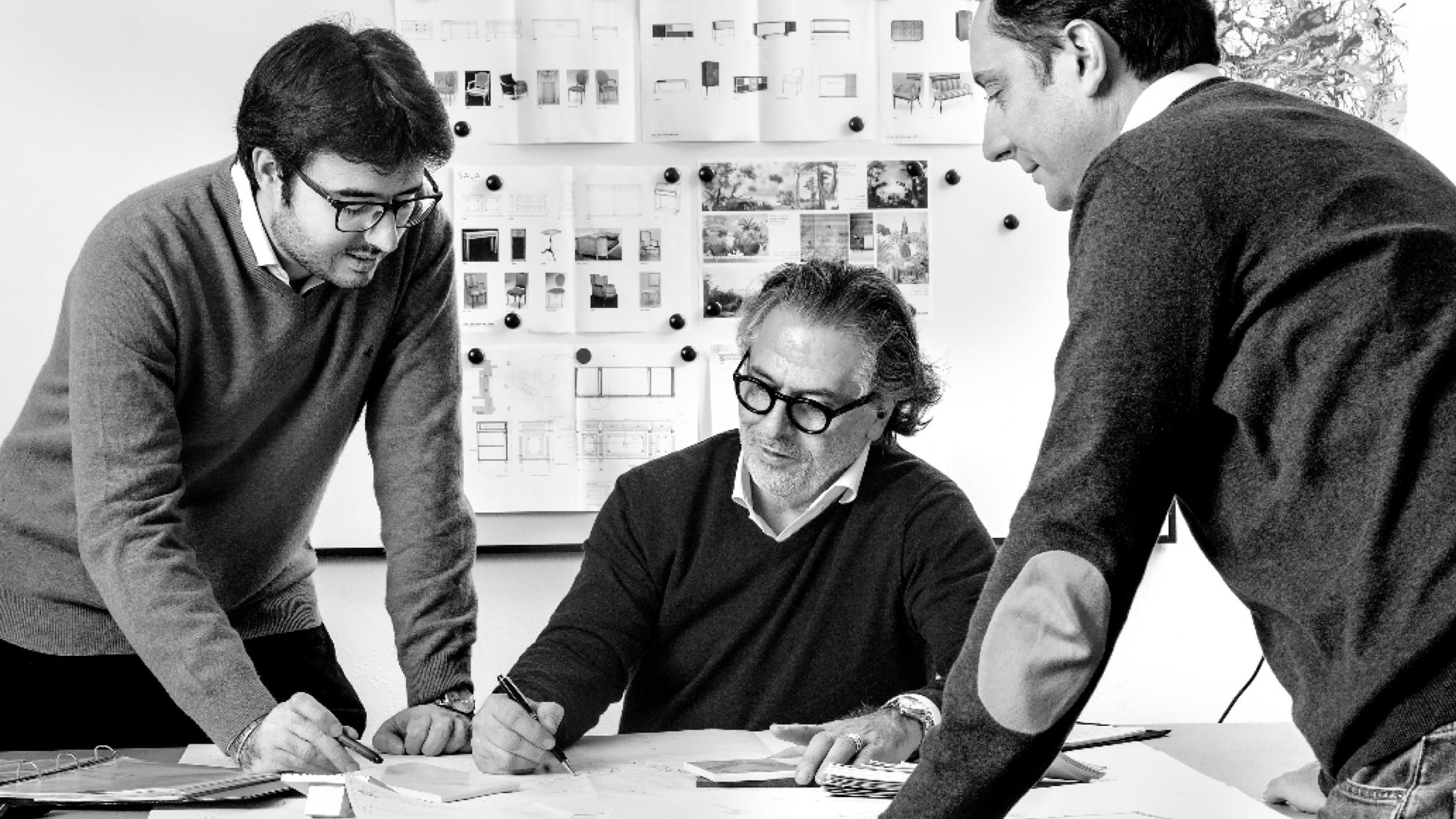
About Us

About Us

Sala Milano was born from the meeting between Éric Da Costa, interior designer for 35 years, and Alessandro Sala, representing the fifth generation of cabinetmakers who have lived in the traditional furniture region of Brianza in Italy since 1910.
From his work all over the world, Éric Da Costa has acquired an enduring conviction rather than orthodoxy of style, it is harmony of form and colors, care in choice of materials and balance in dimension and volume that give interiors heart, intimacy and personalization, as well as that unique sense of well being that appeals to the soul of each customer.
Far away from fashions and trends, Éric Da Costa leaves a timeless imprint on all his projects.
Alessandro Sala is heir to an enduring tradition made up of savoir-faire, gestures, secrets of craftsmanship and an abiding dedication to impeccably executed work that follow the precepts of an art form passed down from generation to generation by his distinguished predecessors.
The perfect union of the skills of these two artists has led to a concept that is unique in the world of interior design. Combining boldness and tradition expressed through a collection of fully customized furniture, Maison Sala Milano can produce any interior design project and deliver anywhere in the world.
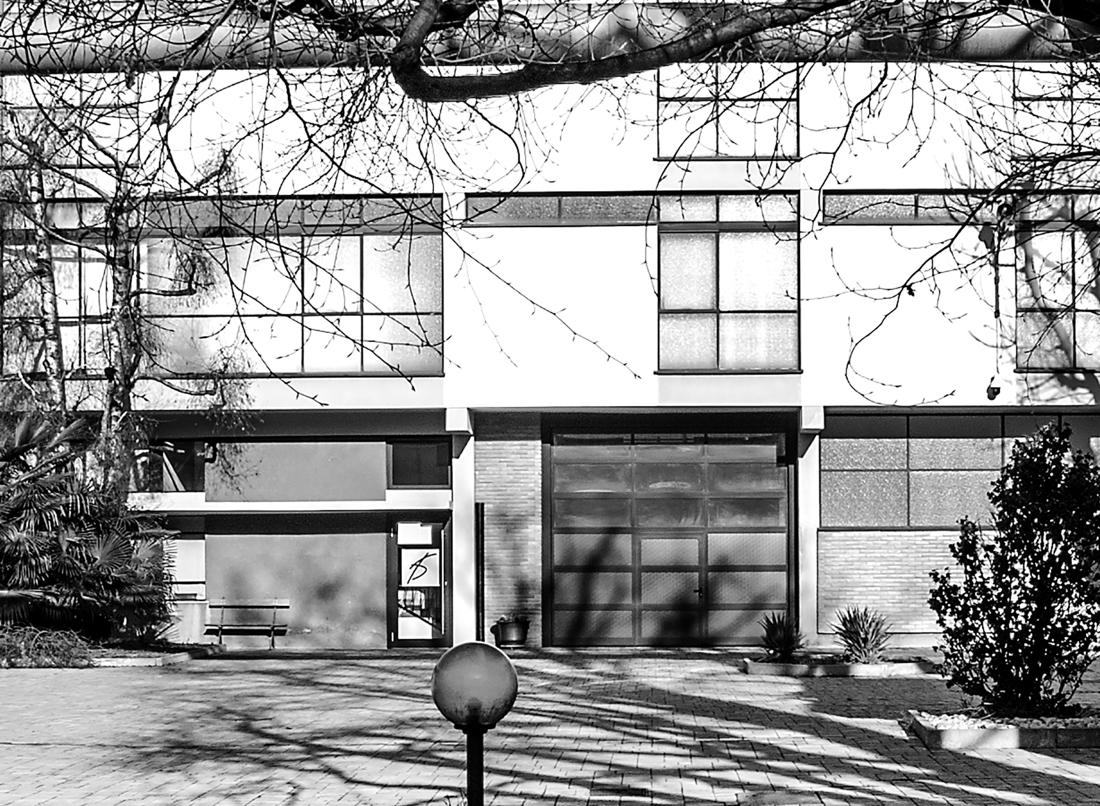
Sala Milano was born from the meeting between Éric Da Costa, interior designer for 35 years, and Alessandro Sala, representing the fifth generation of cabinetmakers who have lived in the traditional furniture region of Brianza in Italy since 1910.
From his work all over the world, Éric Da Costa has acquired an enduring conviction rather than orthodoxy of style, it is harmony of form and colors, care in choice of materials and balance in dimension and volume that give interiors heart, intimacy and personalization, as well as that unique sense of well being that appeals to the soul of each customer.
Far away from fashions and trends, Éric Da Costa leaves a timeless imprint on all his projects.
Alessandro Sala is heir to an enduring tradition made up of savoir-faire, gestures, secrets of craftsmanship and an abiding dedication to impeccably executed work that follow the precepts of an art form passed down from generation to generation by his distinguished predecessors.
The perfect union of the skills of these two artists has led to a concept that is unique in the world of interior design. Combining boldness and tradition expressed through a collection of fully customized furniture, Maison Sala Milano can produce any interior design project and deliver anywhere in the world.

Sala Milano was born from the meeting between Éric Da Costa, interior designer for 35 years, and Alessandro Sala, representing the fifth generation of cabinetmakers who have lived in the traditional furniture region of Brianza in Italy since 1910.
From his work all over the world, Éric Da Costa has acquired an enduring conviction rather than orthodoxy of style, it is harmony of form and colors, care in choice of materials and balance in dimension and volume that give interiors heart, intimacy and personalization, as well as that unique sense of well being that appeals to the soul of each customer.
Far away from fashions and trends, Éric Da Costa leaves a timeless imprint on all his projects.
Alessandro Sala is heir to an enduring tradition made up of savoir-faire, gestures, secrets of craftsmanship and an abiding dedication to impeccably executed work that follow the precepts of an art form passed down from generation to generation by his distinguished predecessors.
The perfect union of the skills of these two artists has led to a concept that is unique in the world of interior design. Combining boldness and tradition expressed through a collection of fully customized furniture, Maison Sala Milano can produce any interior design project and deliver anywhere in the world.

Our History
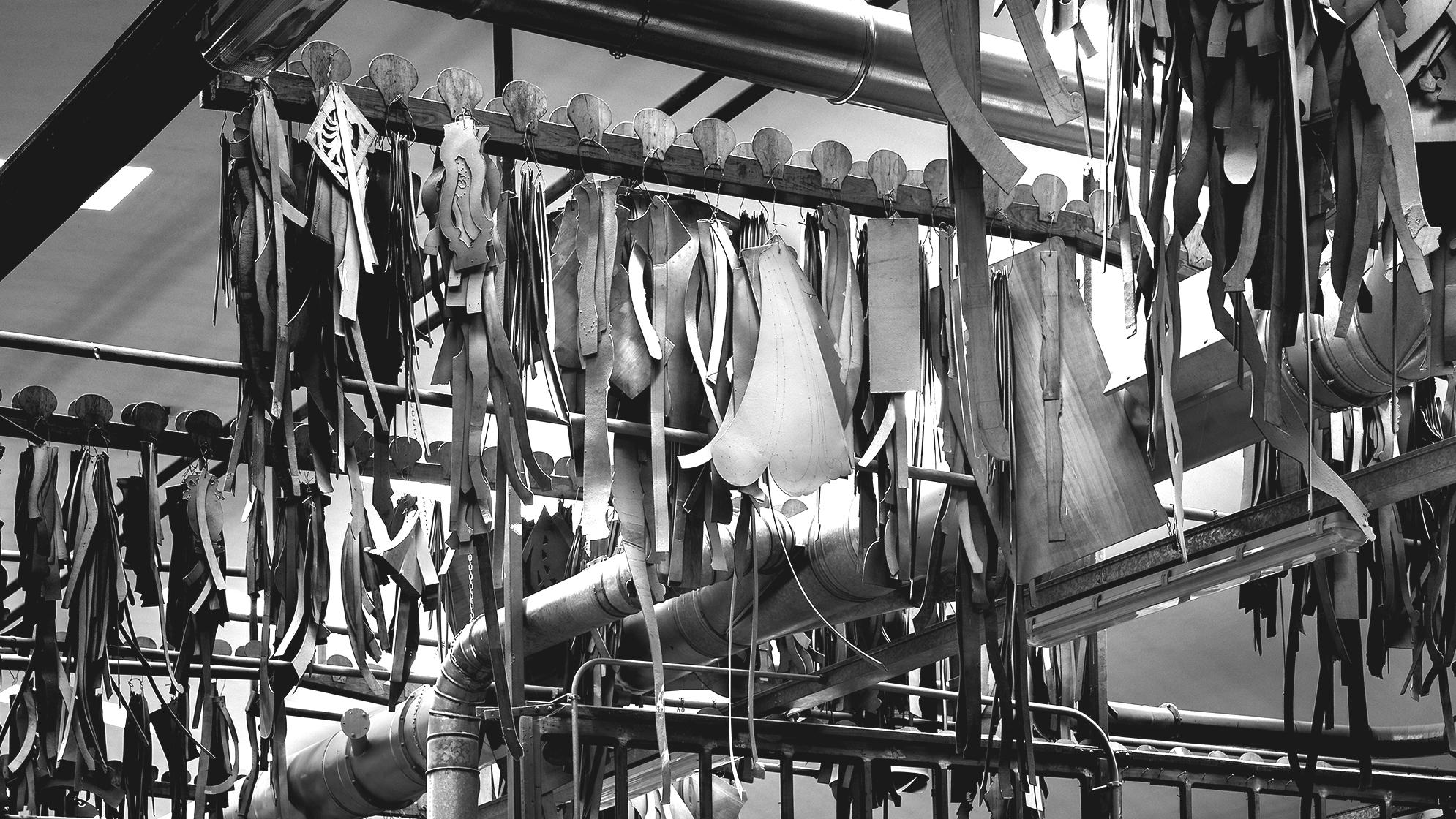
Our History

Our History

The Origins
1881
1910
Giuseppe Sala, trained as an artist and sculptor, and passionate about art in all its forms, began his entrepreneurial career with the creation of a cabinet making workshop in Camnago.
His son, Antonio, also a sculptor, presented product at the international exhibitions in Turin in 1911 and Milan in 1920. Antonio succeeded Giuseppe and gave a new dimension to the family business by creating the Antonio SALA Company, which exported its collections to the United States.
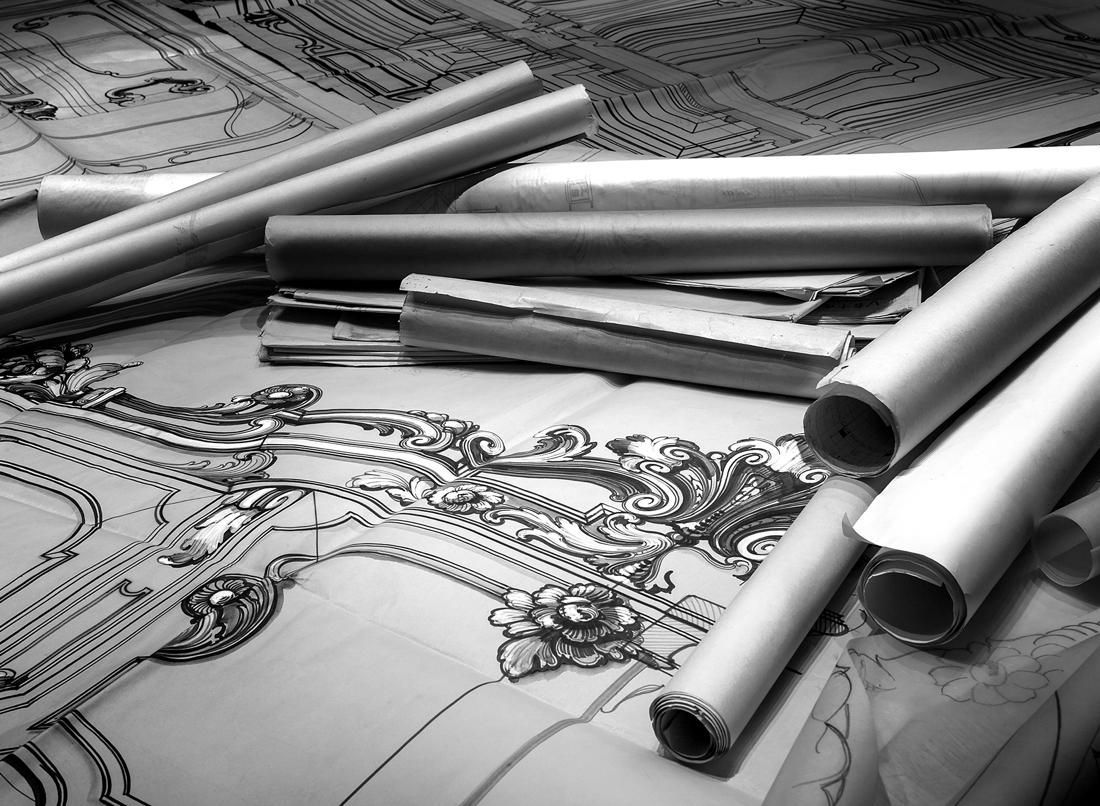
The Origins
1881
Giuseppe Sala, trained as an artist and sculptor, and passionate about art in all its forms, began his entrepreneurial career with the creation of a cabinet making workshop in Camnago.
1910
His son, Antonio, also a sculptor, presented product at the international exhibitions in Turin in 1911 and Milan in 1920. Antonio succeeded Giuseppe and gave a new dimension to the family business by creating the Antonio SALA Company, which exported its collections to the United States.

The Origins
1881
Giuseppe Sala, trained as an artist and sculptor, and passionate about art in all its forms, began his entrepreneurial career with the creation of a cabinet making workshop in Camnago.
1910
His son, Antonio, also a sculptor, presented product at the international exhibitions in Turin in 1911 and Milan in 1920. Antonio succeeded Giuseppe and gave a new dimension to the family business by creating the Antonio SALA Company, which exported its collections to the United States.

The Expansion
The Expansion
The Expansion
1948
After the Second World War Italy’s economy suffered greatly. In these difficult conditions, Antonio handed down the company to his three sons, Ernesto, Ottavio and Aurelio. Ernesto, the eldest son and a professor at the School of Fine Arts in Milan, changed the company name to “Antonio SALA’s Sons”. The workshop started exporting products to European markets undergoing reconstruction while growing its presence in the United States.
This aggressive expansion strategy eventually paid off, as it led to a significant increase in production capacity and an increase in the workforce from around ten craftsmen to over forty.
1953
The expansion continued with the opening of a 350sqm showroom in the center of Rome, the Eternal City. The showroom became a must for architects and interior designers looking for elegant and quality product to satisfy the Roman bourgeoisie. The bourgeoisie, or “Roma Bene”, were named after a film by Carlo Lizzani. The “Roma Bene” immersed themselves in a world of superficial lifestyle and who were later masterfully portrayed in Federico Fellini’s cult film “The Dolce Vita”.
At the same time, SALA began to produce and export to the Middle East emerging markets.
1948
After the Second World War Italy’s economy suffered greatly. In these difficult conditions, Antonio handed down the company to his three sons, Ernesto, Ottavio and Aurelio. Ernesto, the eldest son and a professor at the School of Fine Arts in Milan, changed the company name to “Antonio SALA’s Sons”. The workshop started exporting products to European markets undergoing reconstruction while growing its presence in the United States.
This aggressive expansion strategy eventually paid off, as it led to a significant increase in production capacity and an increase in the workforce from around ten craftsmen to over forty.
1953
The expansion continued with the opening of a 350sqm showroom in the center of Rome, the Eternal City. The showroom became a must for architects and interior designers looking for elegant and quality product to satisfy the Roman bourgeoisie. The bourgeoisie, or “Roma Bene”, were named after a film by Carlo Lizzani. The “Roma Bene” immersed themselves in a world of superficial lifestyle and who were later masterfully portrayed in Federico Fellini’s cult film “The Dolce Vita”.
At the same time, SALA began to produce and export to the Middle East emerging markets.
1948
After the Second World War Italy’s economy suffered greatly. In these difficult conditions, Antonio handed down the company to his three sons, Ernesto, Ottavio and Aurelio. Ernesto, the eldest son and a professor at the School of Fine Arts in Milan, changed the company name to “Antonio SALA’s Sons”. The workshop started exporting products to European markets undergoing reconstruction while growing its presence in the United States.
This aggressive expansion strategy eventually paid off, as it led to a significant increase in production capacity and an increase in the workforce from around ten craftsmen to over forty.
1953
The expansion continued with the opening of a 350sqm showroom in the center of Rome, the Eternal City. The showroom became a must for architects and interior designers looking for elegant and quality product to satisfy the Roman bourgeoisie. The bourgeoisie, or “Roma Bene”, were named after a film by Carlo Lizzani. The “Roma Bene” immersed themselves in a world of superficial lifestyle and who were later masterfully portrayed in Federico Fellini’s cult film “The Dolce Vita”.
At the same time, SALA began to produce and export to the Middle East emerging markets.
A New Orientation
A New Orientation
A New Orientation
1969
Antonio SALA, son of Ernesto and great-grandson of Giuseppe, is an architect and professor at the School of Fine Arts. He took over the management of the family business and reinstated the company’s original name, “Antonio SALA”. In the same year he inaugurates the new company headquarters in Camnago.
Antonio’s great artistic talent added to the creative workshop. Numerous collections were created, some of which were designed more specifically for certain markets to meet cultural specificities.
A great period of expansion began. Germany, France and Switzerland absorbed a large part of the production while the company maintained the major overseas markets.
1984
Successive oil crises and economic crises in Europe shook consumer habits and the furniture market in particular.
Antonio SALA then turns to manufacture custom-made furniture, classic or contemporary, and creating major turnkey projects.
The company’s knowledge of international markets enabled it to work on projects all over the world for hotels, prestigious private properties, presidential residences, as well as institutional projects. Thus, between 1989 and 2000, Antonio SALA was the only Italian company to work on the construction of the European Parliament in Strasbourg.
Throughout this period, the company invested and acquired expertise in the meticulous production of furniture, various customization techniques and in the management of projects far from the original capabilities.
To support this effort, the company developed and strengthened the design office to help architects and decorators find the best technical solutions to meet quality and cost requirements
1969
Antonio SALA, son of Ernesto and great-grandson of Giuseppe, is an architect and professor at the School of Fine Arts. He took over the management of the family business and reinstated the company’s original name, “Antonio SALA”. In the same year he inaugurates the new company headquarters in Camnago.
Antonio’s great artistic talent added to the creative workshop. Numerous collections were created, some of which were designed more specifically for certain markets to meet cultural specificities.
A great period of expansion began. Germany, France and Switzerland absorbed a large part of the production while the company maintained the major overseas markets.
1984
Successive oil crises and economic crises in Europe shook consumer habits and the furniture market in particular.
Antonio SALA then turns to manufacture custom-made furniture, classic or contemporary, and creating major turnkey projects.
The company’s knowledge of international markets enabled it to work on projects all over the world for hotels, prestigious private properties, presidential residences, as well as institutional projects. Thus, between 1989 and 2000, Antonio SALA was the only Italian company to work on the construction of the European Parliament in Strasbourg.
Throughout this period, the company invested and acquired expertise in the meticulous production of furniture, various customization techniques and in the management of projects far from the original capabilities.
To support this effort, the company developed and strengthened the design office to help architects and decorators find the best technical solutions to meet quality and cost requirements
1969
Antonio SALA, son of Ernesto and great-grandson of Giuseppe, is an architect and professor at the School of Fine Arts. He took over the management of the family business and reinstated the company’s original name, “Antonio SALA”. In the same year he inaugurates the new company headquarters in Camnago.
Antonio’s great artistic talent added to the creative workshop. Numerous collections were created, some of which were designed more specifically for certain markets to meet cultural specificities.
A great period of expansion began. Germany, France and Switzerland absorbed a large part of the production while the company maintained the major overseas markets.
1984
Successive oil crises and economic crises in Europe shook consumer habits and the furniture market in particular.
Antonio SALA then turns to manufacture custom-made furniture, classic or contemporary, and creating major turnkey projects.
The company’s knowledge of international markets enabled it to work on projects all over the world for hotels, prestigious private properties, presidential residences, as well as institutional projects. Thus, between 1989 and 2000, Antonio SALA was the only Italian company to work on the construction of the European Parliament in Strasbourg.
Throughout this period, the company invested and acquired expertise in the meticulous production of furniture, various customization techniques and in the management of projects far from the original capabilities.
To support this effort, the company developed and strengthened the design office to help architects and decorators find the best technical solutions to meet quality and cost requirements
Consolidation
Consolidation
Consolidation
2004
Following the unexpected death of Antonio SALA, his son Alessandro, also an architect and fifth generation since Giuseppe, took over the company at the age of twenty-two.
As a worthy heir to a long line of talented parents, he continued the development of the company. Aware of the major economic and technical challenges in an increasingly competitive and internationalized context, Antonio continued to invest year after year in production equipment and strengthen the design office to offer architect and interior design clients the means to carry out major turnkey projects all over the world.
Antonio SALA has two production workshops. One for contemporary furniture that is fully equipped with digital machines and another more traditional workshop that is dedicated to the production of classic furniture, integrating the great fields of cabinet making, sculpture, marquetry, gilding, upholstery, varnishing, etc.
2019
Alongside Maison Antonio SALA, a new strategic direction was created: Maison SALA Milano.
Alessandro SALA reconnected with SALA’s tradition of created collections of furniture with goals of innovation and customization, while maintaining a high level of quality.
This new direction came about with the encounter of the interior architect Eric Da Costa. Da Costa’s brings a lot of experience to Maison SALA Milano with thirty-five years of interior design projects all over the world as well as being the artistic director of several brands.
His great knowledge of art history and his personal creativity allows him not to be a prisoner of any orthodoxy of style and thus to propose original collections by playing with tradition and today’s materials.
The synergy of the SALA family’s more than one hundred years of know-how and the artistic talent of Eric Da Costa makes it possible to open a new chapter in the history of the Maison SALA.
2004
Following the unexpected death of Antonio SALA, his son Alessandro, also an architect and fifth generation since Giuseppe, took over the company at the age of twenty-two.
As a worthy heir to a long line of talented parents, he continued the development of the company. Aware of the major economic and technical challenges in an increasingly competitive and internationalized context, Antonio continued to invest year after year in production equipment and strengthen the design office to offer architect and interior design clients the means to carry out major turnkey projects all over the world.
Antonio SALA has two production workshops. One for contemporary furniture that is fully equipped with digital machines and another more traditional workshop that is dedicated to the production of classic furniture, integrating the great fields of cabinet making, sculpture, marquetry, gilding, upholstery, varnishing, etc.
2019
Alongside Maison Antonio SALA, a new strategic direction was created: Maison SALA Milano.
Alessandro SALA reconnected with SALA’s tradition of created collections of furniture with goals of innovation and customization, while maintaining a high level of quality.
This new direction came about with the encounter of the interior architect Eric Da Costa. Da Costa’s brings a lot of experience to Maison SALA Milano with thirty-five years of interior design projects all over the world as well as being the artistic director of several brands.
His great knowledge of art history and his personal creativity allows him not to be a prisoner of any orthodoxy of style and thus to propose original collections by playing with tradition and today’s materials.
The synergy of the SALA family’s more than one hundred years of know-how and the artistic talent of Eric Da Costa makes it possible to open a new chapter in the history of the Maison SALA.
2004
Following the unexpected death of Antonio SALA, his son Alessandro, also an architect and fifth generation since Giuseppe, took over the company at the age of twenty-two.
As a worthy heir to a long line of talented parents, he continued the development of the company. Aware of the major economic and technical challenges in an increasingly competitive and internationalized context, Antonio continued to invest year after year in production equipment and strengthen the design office to offer architect and interior design clients the means to carry out major turnkey projects all over the world.
Antonio SALA has two production workshops. One for contemporary furniture that is fully equipped with digital machines and another more traditional workshop that is dedicated to the production of classic furniture, integrating the great fields of cabinet making, sculpture, marquetry, gilding, upholstery, varnishing, etc.
2019
Alongside Maison Antonio SALA, a new strategic direction was created: Maison SALA Milano.
Alessandro SALA reconnected with SALA’s tradition of created collections of furniture with goals of innovation and customization, while maintaining a high level of quality.
This new direction came about with the encounter of the interior architect Eric Da Costa. Da Costa’s brings a lot of experience to Maison SALA Milano with thirty-five years of interior design projects all over the world as well as being the artistic director of several brands.
His great knowledge of art history and his personal creativity allows him not to be a prisoner of any orthodoxy of style and thus to propose original collections by playing with tradition and today’s materials.
The synergy of the SALA family’s more than one hundred years of know-how and the artistic talent of Eric Da Costa makes it possible to open a new chapter in the history of the Maison SALA.
Biography of Éric DA COSTA
Biography of Éric DA COSTA
Biography of Éric DA COSTA
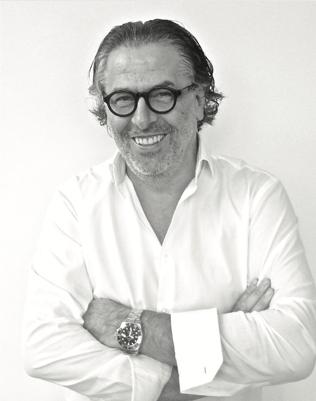
After graduating from the École des Arts Décoratifs, Éric DA COSTA joined the prestigious design office Atelier 74 founded by André PACCARD in Annecy in 1984. In the 1970s, André PACCARD, a patron of the arts, carried out restorations of Islamic art works under the aegis of King HASSAN II. Following the restoration, the King opened his palaces to PACCARD to discover the hidden treasures of art throughout history. PACCARD wrote a book on Islamic art which is still a reference in the field.
Atelier 74, which employs hundreds of people in the Annecy region, has an office in Rabat which is in charge of the restoration and decoration work on the official buildings and palaces of the Kingdom of Morocco. Éric began his career at Atelier 74 working on prestigious projects and subtly blending the French classical style and Islamic culture resulting in excellence. Éric was very quickly spotted by the King of Morocco, who entrusted him with the responsibility of the design projects for the Palaces and Private Residences of the Royal Family, as well as official trip venues.
In 1993, Éric created his own interior design agency with two offices, one in Morocco and the other in France. He is called upon by a private clientele to work on projects for villas and apartments all over Europe and the Middle East, but also for luxury hotels (see references).
During this period, he was also the Artistic Director for the Talents Home Group (Ehalt, Delaroux and Monge brands). Then from 2014 to 2018 the was the Artistic Director for the GRANGE Furniture and designed several collections. GRANGE was distributed in over 50 countries.
In 2017 Éric set up his design agency in Switzerland, in Morges and Yverdon.
Éric DA COSTA is not a man to follow the times. He is not a prisoner of any orthodoxy of style. He knows from experience that the “trendy” or “fashionable” design does not survive long. He relies on the personality of his clients, their life aspirations, the history of the location and his knowledge of the art history to create an environment that is exemplary of modernity, personal and timeless.
Éric’s design process requires a strong human relationship to create and flourish. It is the strength of the alliance of a history, a family, the more than century-old cabinet-making know-how of the Antonio Sala house and the artistic talent of Éric Da Costa that led him and Alessandro Sala to establish the company SALA Milano in 2019. With SALA Milano, Éric creates the furniture collections and provides the Artistic Direction for design projects of villas, hotels, shops and public buildings.
A new creative chapter has just opened for Éric DA COSTA.

After graduating from the École des Arts Décoratifs, Éric DA COSTA joined the prestigious design office Atelier 74 founded by André PACCARD in Annecy in 1984. In the 1970s, André PACCARD, a patron of the arts, carried out restorations of Islamic art works under the aegis of King HASSAN II. Following the restoration, the King opened his palaces to PACCARD to discover the hidden treasures of art throughout history. PACCARD wrote a book on Islamic art which is still a reference in the field.
Atelier 74, which employs hundreds of people in the Annecy region, has an office in Rabat which is in charge of the restoration and decoration work on the official buildings and palaces of the Kingdom of Morocco. Éric began his career at Atelier 74 working on prestigious projects and subtly blending the French classical style and Islamic culture resulting in excellence. Éric was very quickly spotted by the King of Morocco, who entrusted him with the responsibility of the design projects for the Palaces and Private Residences of the Royal Family, as well as official trip venues.
In 1993, Éric created his own interior design agency with two offices, one in Morocco and the other in France. He is called upon by a private clientele to work on projects for villas and apartments all over Europe and the Middle East, but also for luxury hotels (see references).
During this period, he was also the Artistic Director for the Talents Home Group (Ehalt, Delaroux and Monge brands). Then from 2014 to 2018 the was the Artistic Director for the GRANGE Furniture and designed several collections. GRANGE was distributed in over 50 countries.
In 2017 Éric set up his design agency in Switzerland, in Morges and Yverdon.
Éric DA COSTA is not a man to follow the times. He is not a prisoner of any orthodoxy of style. He knows from experience that the “trendy” or “fashionable” design does not survive long. He relies on the personality of his clients, their life aspirations, the history of the location and his knowledge of the art history to create an environment that is exemplary of modernity, personal and timeless.
Éric’s design process requires a strong human relationship to create and flourish. It is the strength of the alliance of a history, a family, the more than century-old cabinet-making know-how of the Antonio Sala house and the artistic talent of Éric Da Costa that led him and Alessandro Sala to establish the company SALA Milano in 2019. With SALA Milano, Éric creates the furniture collections and provides the Artistic Direction for design projects of villas, hotels, shops and public buildings.
A new creative chapter has just opened for Éric DA COSTA.

After graduating from the École des Arts Décoratifs, Éric DA COSTA joined the prestigious design office Atelier 74 founded by André PACCARD in Annecy in 1984. In the 1970s, André PACCARD, a patron of the arts, carried out restorations of Islamic art works under the aegis of King HASSAN II. Following the restoration, the King opened his palaces to PACCARD to discover the hidden treasures of art throughout history. PACCARD wrote a book on Islamic art which is still a reference in the field.
Atelier 74, which employs hundreds of people in the Annecy region, has an office in Rabat which is in charge of the restoration and decoration work on the official buildings and palaces of the Kingdom of Morocco. Éric began his career at Atelier 74 working on prestigious projects and subtly blending the French classical style and Islamic culture resulting in excellence. Éric was very quickly spotted by the King of Morocco, who entrusted him with the responsibility of the design projects for the Palaces and Private Residences of the Royal Family, as well as official trip venues.
In 1993, Éric created his own interior design agency with two offices, one in Morocco and the other in France. He is called upon by a private clientele to work on projects for villas and apartments all over Europe and the Middle East, but also for luxury hotels (see references).
During this period, he was also the Artistic Director for the Talents Home Group (Ehalt, Delaroux and Monge brands). Then from 2014 to 2018 the was the Artistic Director for the GRANGE Furniture and designed several collections. GRANGE was distributed in over 50 countries.
In 2017 Éric set up his design agency in Switzerland, in Morges and Yverdon.
Éric DA COSTA is not a man to follow the times. He is not a prisoner of any orthodoxy of style. He knows from experience that the “trendy” or “fashionable” design does not survive long. He relies on the personality of his clients, their life aspirations, the history of the location and his knowledge of the art history to create an environment that is exemplary of modernity, personal and timeless.
Éric’s design process requires a strong human relationship to create and flourish. It is the strength of the alliance of a history, a family, the more than century-old cabinet-making know-how of the Antonio Sala house and the artistic talent of Éric Da Costa that led him and Alessandro Sala to establish the company SALA Milano in 2019. With SALA Milano, Éric creates the furniture collections and provides the Artistic Direction for design projects of villas, hotels, shops and public buildings.
A new creative chapter has just opened for Éric DA COSTA.


